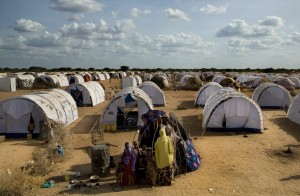Somalia at a glance
In Search of a Way In
The decades-long protracted emergency in Somalia grew considerably worse from 2006 to 2008, with a convergence of floods, droughts, increased food prices and an ongoing situation of insecurity. Most humanitarian organisations say the worst problem in Somalia is not shortage of food or water, but the disappearance of ‘humanitarian space’ – that is, the social, political and security opportunities for implementing aid operations. The lack of access to affected populations means that operations are conducted by remote control. While donors have been generous with unconditional aid, particularly food, they have also contributed aid inappropriately, through what many regard as a heavy-handed political agenda. With only a few exceptions, almost all aid experts, NGO representatives and even donor staff agree that donors should stop trying to orchestrate the political or military solution to Somalia’s government. Furthermore, donor fatigue in Somalia has exhibited itself not through a lack of funding, but in the diligence in tracking it. Many donors ask little from their grantees about the performance or impact of programmes they fund.

Share this